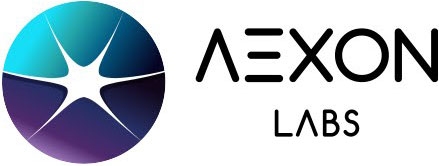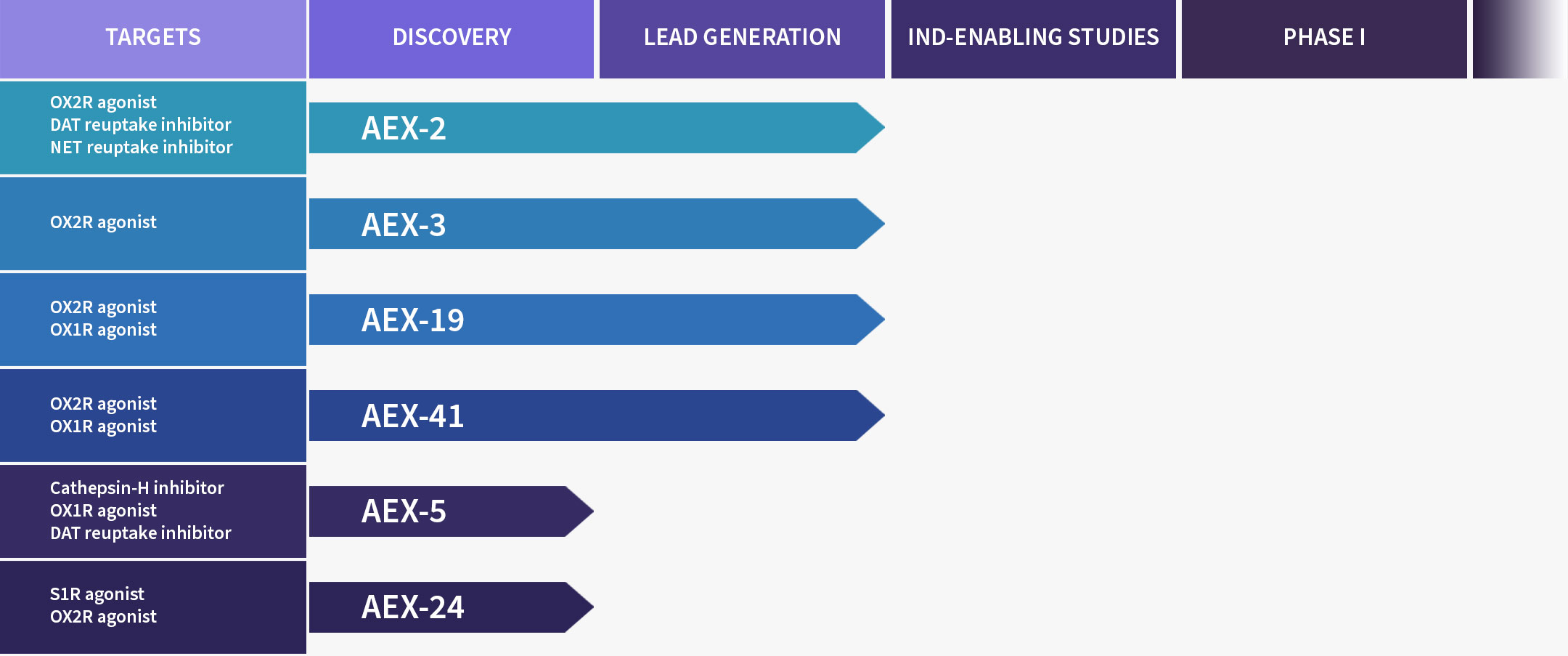
Frontiers in Neuroscience
First non-sulfonamide dual orexin receptor agonist platform targeting neuroinflammation for neurodegenerative disease therapies.
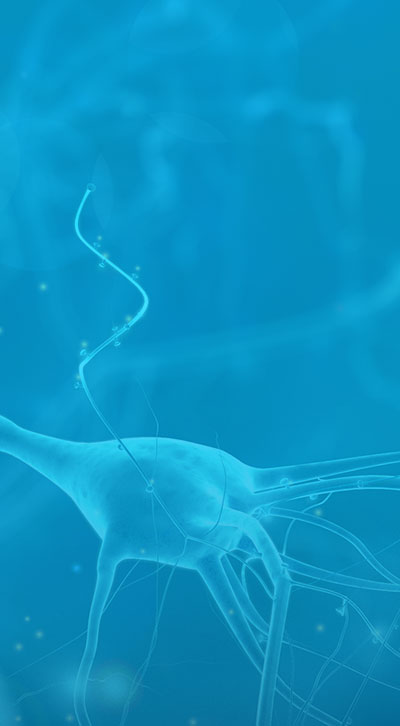



Previous findings suggest possible therapeutic targets for rare neurodegenerative diseases (HD, AD, KLS). Identification of neurological therapeutic targets are based on novel mechanistic approaches.
For potential treatment of Neurological Diseases.

Neurodegenerative disorders, which are defined by the breakdown of neurons over time, are affecting an increasing number of people. Stroke, Alzheimer’s, Parkinson’s, Multiple Sclerosis, Migraine, and Amyotrophic Lateral Sclerosis are just a few examples of brain disorders that have no cure. Besides, there is a huge demand for drugs that can cure the diseases mentioned above because the majority of the medications we use to treat them only alleviate diseases.
Discovery of Orexins System: Novel Neuropharmacology Perspectives

Narcolepsy Type 1 NT1
A rare neurological condition that affects the brain’s ability to regulate the normal sleep-wake cycle
Caused by a profound loss of orexin neurons in the brain

High Unmet Need
Current treatments do not restore normal function, and NT1 symptoms persist despite polypharmacy
- 75% patients experience EDS
- 50% patients still have 1-2 cataplexy episodes per day
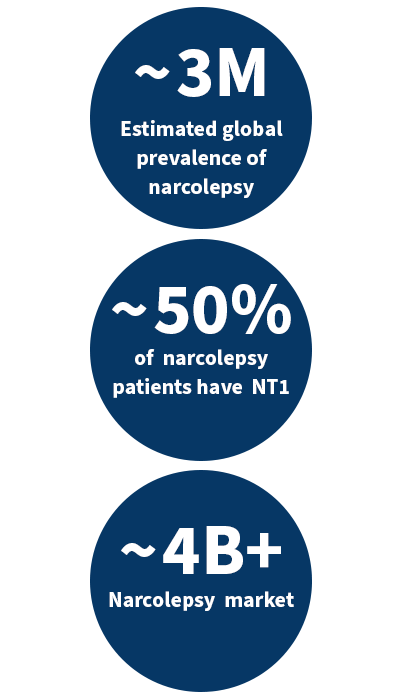






Medicinal Chemistry & Intellectual Property
Medicinal Chemistry
AEX compounds are innovatively designed to be the best in class clinical candidate
Innovative aromatic heterocyclic compounds
Favorable physicochemical and biopharmaceutical properties
- Lipinski’s rule of five true
- Lipophilicity properties and values assessed (HBL, logP)
- Solubility pH 0 to pH 13 (0.0001 mg/ml)
- Pka, pH 0 to pH 9 (microspecies ⧣1, 100%; microspecies ⧣ 2, 0%)
Intellectual Property
Patent is filed (e.g. in narcolepsy, sleep disorders and various neurodegenerative disorders) in an international PCT (submitted: 30/12/2022)
The Company
Neurodegenerative disorders, defined by the breakdown of neurons over time, are affecting an increasing number of people.
Alzheimer’s, Parkinson’s, Huntington’s, Narcolepsy and Amyotrophic Lateral Sclerosis are just a few examples of brain disorders that have no cure. Current treatments do not address the route cause of the disorder and often lack therapeutical effectiveness and safety for these neurological disorders. That’s why the unmet medical need remains high in CNS in general.
Aexon Labs is conducting leading edge research on new compounds to address such unmet needs.









Innovative CNS Targets
Narcolepsy with Cataplexy
Synucleinopathies
Alzheimer’s disease
Narcolepsy, a neurological disorder characterized by excessive daytime sleepiness and disrupted sleep patterns, has been associated with dysfunction in the orexin system.
REM-related symptoms is likely to stem from the reduction of receptor functions of both OX1R and OX2R.
Rescue expression of OX1R in noradrenergic neurons in the locus coeruleus (LC) of OX1R and OX2R double-knockout mice ameliorated the sleep-wake fragmentation indicating that OX1R also plays an important role in maintaining wakefulness.
If OX2R is a primary target for developing agonists to treat narcolepsy, rescuing the function of both receptors would be ideal (Saitoh & Sakurai, 2023).
OX1R predominantly present in dopaminergic neurons plays a crucial role in regulating wakefulness and maintaining a stable sleep-wake cycle. OX1R deficiency in dopaminergic neurons causes an increase in novelty-induced locomotion and exploration, which could indicate elevated arousal levels and hyperactivity (Xiao et al., 2023).
OX1R level is downregulated by α‑synuclein in vitro and in vivo inducing Rapid Eye Movement (REM) sleep behavior disorder (RBD) occurrence (Fan et al., 2023).
Medications activating dual OX1R and OX2R aiming to compensate for the deficiency seen in narcoleptic individuals, promoting wakefulness and improving daytime alertness offer potential avenues for therapeutic interventions.
Therapeutic approaches targeting cathepsins can contribute to prevent or slow down the pathogenesis of neurodegenerative diseases as seen for neuronal ceroid lipofuscinosis, synucleinopathies (Parkinson’s disease, Dementia with Lewy Body and Multiple System Atrophy) as well as Alzheimer’s and Huntington’s disease (Stoka et al., 2023).
Cathepsin H is a lysosomal cysteine protease that plays a role in various physiological processes, including the immune response. In the context of neuroinflammation, cathepsin-H has been implicated in modulating immune reactions within the central nervous system (Wang et al., 2023).
Neuroinflammation refers to the inflammatory response in the nervous tissue, often involving glial cell activation and the release of pro-inflammatory molecules. Cathepsin H can influence
neuroinflammation by participating in the processing and presentation of antigens, which is crucial for the activation of immune cells such as microglia. Previous studies had also suggested a potential involvement of Cathepsin H in the pathogenesis of narcolepsy (Mogavero et al., 2023).
Targeting cathepsin H may offer a way to modulate the immune response within the central nervous system and potentially mitigate the detrimental effects of neuroinflammation in various neurological disorders.
Alzheimer’s Disease (AD) characterized by two pathological hall markers—extracellular b-amyloid plaques and intraneuronal fibrillary tangles composed of hyperphosphorylated tau proteins, is the most common form of dementia, accounting for 60–80% of all cases.
According to the World Alzheimer Report 2022, about 55 million people lived with dementia worldwide in 2019. This number is expected to rise to 139 million in 2050 (Gauthier et al., 2023).
Sigma-1 R (S1R) participating in various physiological and pathological processes, such as neurotransmission, neuroprotection and neuroinflammation is considered as a therapeutic target for a range of neurodegenerative diseases, including amnesia and AD and also various synucleopathies (Wang & Jia, 2023)
S1R agonists find to have multiple mechanisms of action that could be beneficial in AD, such as anti-inflammatory and antioxidant effects, modulation of neurotransmitters, and a neuroprotective effect by inhibiting Aβ aggregation and tau hyperphosphorylation is AD (Malar et al., 2023; Shinoda et al., 2023).
Amyloid therapies as well as S1R agonists as treatment for tau abnormalities, inflammation, and synaptic dysfunction are well represented in the AD development pipeline in 2023 (Cummings et al., 2023).
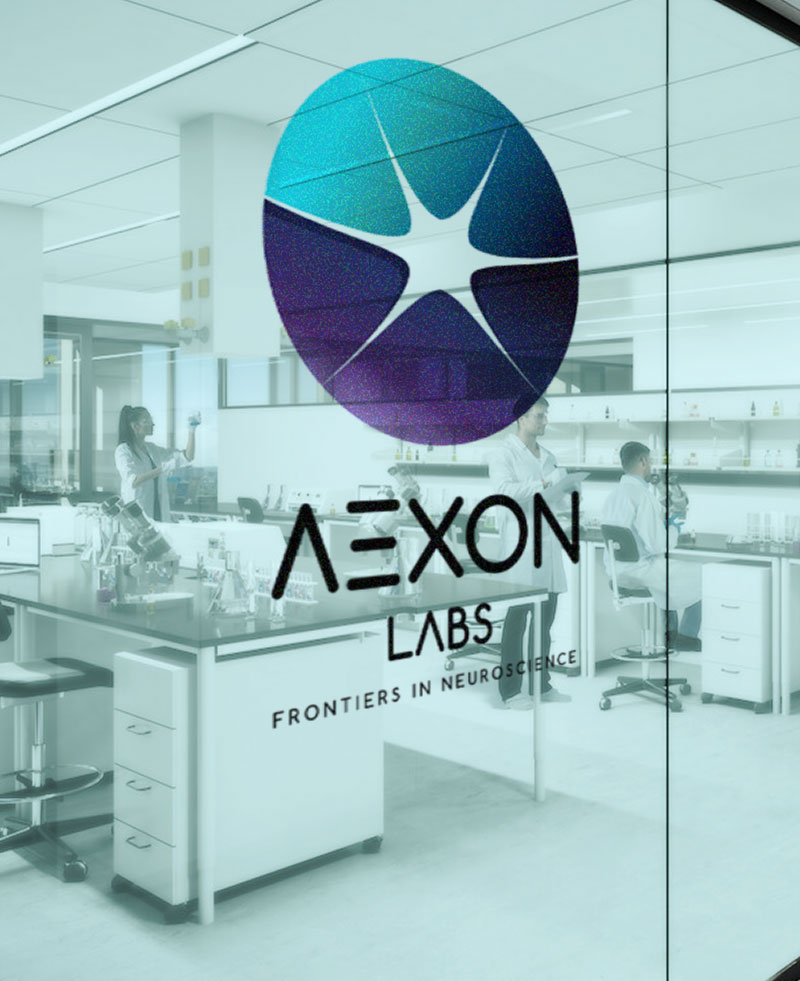
Aexon Labs Team
Eric Konofal, MD, PhD
A drug-hunter and co-founder of NLS Pharmaceutics Inc. (NASDAQ: NLSP) a public company focusing on the treatment of rare CNS disorders.
He has a deep knowledge and expertise in clinical and scientific research and is a senior medical consultant for the Pediatric Sleep Disorders Center at the Robert-Debre University
of Paris (APHP) and served as Principal Clinical Investigator at the Clinical Pharmacology & Pharmacogenetic Department at Robert-Debre University of Paris.
Dr. Konofal has been named (co-)author in over 76 peer-reviewed publications and is the inventor of over 88 patents world-wide.
Contact:
Email: ek@aexonlabs.com
Anh-Tuan Lormier, PhD Chemistry
Inventor in the field of chemistry. Co-founder and President of CayLab, dedicated in the synthesis of molecules of therapeutic interest. R&D service provider.
Medicinal chemist designer in the field of endocrinology, oncology and neurology
Primarily involved in synthetic organic chemistry and data analysis tools, to design and create NME.
Contact:
Email: atl@aexonlabs.com
Vision
Imagine a World without Neurodegenerative Disorders – this is what We work for – relentlessly.
Mission
Spearheading Discovery in Neuroscience that will impact patients lives – sustainably.
Values
Work with Integrity – Act with Honesty – Promote Compassion and Trust – Create Value for Patients

Address
Aexon Labs. Inc
16192 Coastal Hwy
Lewes 19958, DE
USA
ek@aexonlabs.com
